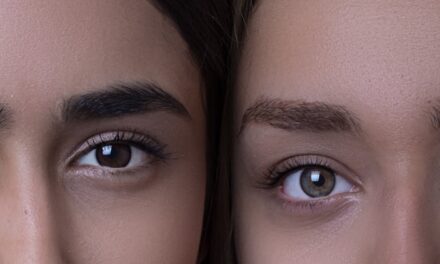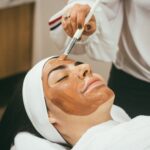The ‘ideal body shape’ for women has evolved almost as frequently as fashion trends throughout the decades. In some cases, the definition of the ‘perfect woman’ over the years is startling and reveals a lot about popular culture at the time.
Despite the host of fad diets, weight loss pills, and celebrity idols promoting unattainable body standards, in 2021 we’re still seeing much of the same.
Here, two leading experts take us on a trip down memory lane to marvel at the variously ludicrous expectations of the feminine image throughout history, and what to expect for 2022.
1910’s
The Gibson Girl was the “it girl” of the day.
In the early 1900s, illustrator Charles Gibson was the equivalent of today’s fashion photographers. His fantasy lady, who was featured in high-fashion magazines such as Harper’s, swiftly, rose to prominence as the Beyoncé of that era.
The defining appearance was a show-stopping feminine body in the shape of a looping figure-8 owing to a super-cincher corset, which women raced to replicate.
Andre Fournier, Co-Founder of Deleo comments: “This particular era is not too dissimilar to what we have been seeing in more recent years, with the likes of Kim Kardashian and Jennifer Lopez both sporting the perfect hourglass figure, with a cinched waist that females everywhere flock to replicate.”
Hagen Schumacher, a leading consultant plastic surgeon at Adore Life adds: “In the 1900’s, a woman’s only option to achieve the desired shape was to wear a corset, which despite being wildly uncomfortable, were incredibly dangerous.
Made from a stout fabric, with bone or metal inserts, they fastened very tightly at the front with hooks and laces. Whilst they were effective in cinching the waist, they were often laced so tightly that they restricted breathing, causing the woman to faint. They also compressed the abdominal organs causing poor digestion and even permanent deformity.
Thankfully, nowadays technology has advanced so far that the risk implications of achieving a particular body shape has massively reduced.
To achieve that hour-glass shape, liposuction is one of the most popular and safest procedures on the market to achieve a narrower waistline. A buttock and thigh lift with a circumferential scar is also becoming increasingly popular. This can be performed on its own, or together with an abdominoplasty as a lower body lift.
There are also fat transfer procedures which have been popularised today by the likes of Kim Kardashian. Although these procedures can be performed safely, several fatalities have led some plastic surgeons to approach with caution.
Because plastic surgery carries complication risks like any other surgery it is important to discuss with a reputable plastic surgeon which procedures can achieve the desired look safely.”
Fournier explains that there are even safe non-invasive body-layering treatments available.
He says: “Unlike before when women were causing damage to vital organs through super-cinched corsets, we now have devices such as Deleo’s body layering concept, which can refine, tone and firm up where efficacy and safety are at the core.”
1920’s
Wave goodbye to those towering curves and welcome in the ‘flapper’. Unlike the static beauty of the previous decade, the flapper is always moving. Gibson’s accentuated curves have been replaced with smaller breasts and hips.
Fournier adds: “In the media at the time, you would notice that an individual’s waistline moves several inches below the navel in fashion, necessitating slender hips. So, for those women who did have love handles during this period would have found it particularly tough to meet those unattainable beauty standards, as the fat in this particular area is extremely stubborn.”
While the trend had drastically changed from the previous decade, the flapper still had sex appeal; it’s only that the emphasis has migrated below to the legs, where a shorter knee-length hemline revealed the flash of a garter while executing a ‘shimmy’.
Margaret Gorman, the inaugural Miss America in 1921, embodied the ideal of the day. Her 5-foot-1, 108-pound physique was a whopping 180 pounds less than it had been during the Gibson period.
1930’s
Individual’s up-beat spirits and hemlines both fall following the stock market meltdown. Dresses are now draped on the bias for a more modern look. Translation? A slimmer and less ‘boxy’ look.
Fournier adds: “There’s a hint of shoulder and the natural waist (around the belly button) returns. The favoured flat-chested appearance of the 1920s gives way to a tiny bust-line.” Probably owing to the invention of a new bra-cup size during this time period.
Hagen adds: “This decade marks a transition from the streamlined, slender appearance of the 1920s to the curvier 1940s, as the media welcomes a somewhat more voluptuous shape.”
Actress Dolores del Rio for this time was idolised for her ‘warmly turned’ and ‘roundly curved’ figure during this time.
1940’s
Military shoulders (wide, boxy, and aggressive) have become fashionable since World War II with emphasis particularly on angularity. With names like “bullet” and “torpedo,” bras have a pointed aspect as well.
Hagen says: “Half a decade later, these were made popular again by Madonna on her Blond Ambition Tour. While this might appear bizarre from today’s viewpoint, it recognises the role of the nipple in achieving a desirable breast shape. Modern procedures to modify the nipple shape include augmentation with fillers or fat, surgical reduction, correction of inverted nipples and surgical reduction of the surrounding areola.”
All of this results in the current look: a long-limbed, taller, and squarer figure.
1950’s
Welcome to the age of the pin-up. The ideal body type reaches Jessica Rabbit dimensions in the 1950s, with Marilyn Monroe famed as an iconic sex symbol.
Hagen comments: “Following the angularity of the war and rationing, gentle voluptuousness was sought after, and women with bigger breasts and fuller hips became more desirable.
The desire for larger breasts led to doctors experimenting with sponge implants that were inserted into women’s breasts for a fuller bust. Marilyn Monroe is rumoured to have undergone this procedure.”
Weight-gain pills like Wate-On were even recommended to thinner ladies in ads to help flesh out curves.”
1960’s
In the swinging 1960s, the pendulum swung in the other direction. Now, being skinny is trending and icons such as Twiggy and Jean Shrimpton embodied the new ideal.
Fournier adds: “It’s interesting to see again how the ‘ideal body shape’ has changed so drastically here where now suddenly being super-slender and petite is the new trend. Again, during this time technology wasn’t as advanced as it is today, so to achieve that ‘perfect figure,’ women would solely rely upon diet and exercise.”
As time has evolved, we’ve realised that it is almost impossible to spot target weight loss, and there are naturally areas of the body where we hold more stubborn body fat. With a little help from devices, we are now able to target those specific areas to help tone, and firm the body.
1970’s
This decade was a wild one. Whilst women worked hard to maintain a slim-hipped, flat-stomached physique to pull off the bellbottoms at the discotheque, Plastic Surgeons moved to the forefront of the medical profession.
Hagen comments: “Whilst plastic surgery was reserved for Hollywood’s elite, procedures such as breast augmentation, rhinoplasty and face reshaping gained popularity and celebrities such as Betty White secretly went under the knife.”
Fournier adds: “Whilst the general body shape of this era remains slim, particularly in the torso, we do start to see the return of some curves as women try to add shape to the popular tight spandex outfits.”
1980’s
The supermodel takeover! Women like Elle MacPherson, Naomi Campbell, and Linda Evangelista, who dominated the media and music videos of this decade, led the stampede off the runway and into the heart of pop culture.
Jane Fonda, a fitness pioneer, ushers in an era of fitness in the 1980s. Aerobics and running become popular, and women’s muscles become acceptable and attractive for the first time.
Hagen adds: “For men, the body building look set new standards as exemplified by Arnold Schwarzenegger and Sylvester Stallone.
Elsewhere, plastic surgery often led to an overcorrected appearance such as Michael Jackson’s ever-changing nose and facelifts could result in a ‘wind-blown’ appearance. Thankfully, as techniques advanced, they became a lot more natural looking with techniques such as the SMAS facelift which focuses on lifting saggy tissues instead of pulling the skin.”
Fournier adds: “The 1980’s was a time where taking care of your body health was important with women actively taking part in more exercise and eating well.”
1990’s
During the 90’s, the androgynous style was fashionable, and the so-called heroin chic movement idolised an extremely slim body form, angular bone structure, and pale complexion.
Hagen explains that in the US alone, cosmetic procedures were only growing in popularity, with over 5,000 registered plastic surgeons working to help celebrities achieve their desired look.
“Beauty standards in the 90’s saw an uplift in liposuction procedures, as celebrities strived to achieve the super slender look honed by Kate Moss on the catwalk.”
Fournier adds: “During these years, Kate Moss was definitely small and slender for a model, even by professional standards, at 5’7″. In contrast to the female fitness pioneers emerging from the previous decade, the ‘heroine-chic’ model look was hugely different.
2000’s
The 90s’ pale, gaunt, glassy-eyed image is a thing of the past. As we arrive in the noughties, we begin to see the emergence of chiselled washboard – think Peter Andre.
Fournier comments: “Visible abs ruled the noughties with the likes of Christina Aguilera, Peter Andre and Britney Spears dominating pop culture around that time.
Hagen adds: “Unfortunately there is no ‘quick fix’ to achieving washboard abs, and Abdominal etching was the way to go, particularly for men. Abdominal etching heavily relied on liposuction to remove body fat and reveal muscle. Of course, the success of this procedure depended on a healthy diet to keep off excess body fat.”
Fournier adds: There is no such thing as a fast fix for six-pack abs. Discipline and a dedication to clean, nutritious diet as well as frequent exercise, including cardio and weight training, are required. Even then, there is no certainty that you would be left with abs by the end of it, due to stubborn fat.
Now, we have the likes of our Cristal Fit device that revolutionises body contouring and aims to build up the silhouette by toning and sculpting the muscles. If only that was around in the 2000’s!”
2010’s & 2020’s
Booty bonanza, in a nutshell. This decade made a significant impact on the changing landscape of women’s body image.
The rise of social media influencers sees a large increase in desiring that ‘bootylicious’ figure. Kim Kardashian and Nicki Minaj are at the forefront of pop culture, and we see a real shift in attitude towards aesthetics treatments as people strive for that ‘perfect’ Instagram body.
Hagen comments: Nowadays, the beauty standards of today are simply impossible. Social media is dominated by filtered images of influencers promoting an impossibly tiny frame, with larger hips and breasts. Naturally, this body type is next to impossible to achieve, and celebrities rely heavily on cosmetic procedures and filters.
Procedures like the BBL (Brazilian Butt Lift) and CoolSculpting have become increasingly popular, but unfortunately, they do not come without risk. Currently, the BBL is one of the most dangerous procedures to undergo, with a mortality rate estimated at 1 in 3000 to 5000, the highest in any cosmetic procedure.”
Fournier adds: “Sadly, social media has heightened the desire of needing to look like these Celebrities which has increased beauty standards and drove people to seek treatments to achieve the desired body.
Advancements in technology means non-invasive treatments, such as our body layering concept are completely safe, and can help you achieve your desired look with minimal downtime. Body layering is built with three fundamental functions to help with tonicity, volume and firmness.”
What to expect in 2022
Hagen says: “I think 2022 will see the return of more ‘natural’ beauty. Unrealistic beauty standards which have been heavily determined by filters and social media images are hopefully returning to a more natural appearance, and recent cosmetic surgery trends show a drive towards enhancing existing features instead of creating an artificial look.”
Andre Fournier adds: “I think another big trend this year will be this notion surrounding body positivity, which combines both mental and physical health.
Individuals are more conscious of not only looking good but feeling good and I think the focus will be more towards adopting healthier lifestyle habits, building confidence and practising ‘self-love’. By doing so, I really feel society will become more acceptant of all body shapes and sizes.
While nutrition and exercise are both beneficial to a healthy lifestyle and weight loss, the ultimate result might be disappointing at times. There is rarely a remedy on the market that can assist you to address all three areas of concern, whether you have sagging skin, obstinate fat, or a lack of muscle.
This is why we created our body layering concept which is built in with three fundamental functions to help with volume, tonicity and firmness – to enhance your natural shape, rather than changing it completely.”


















